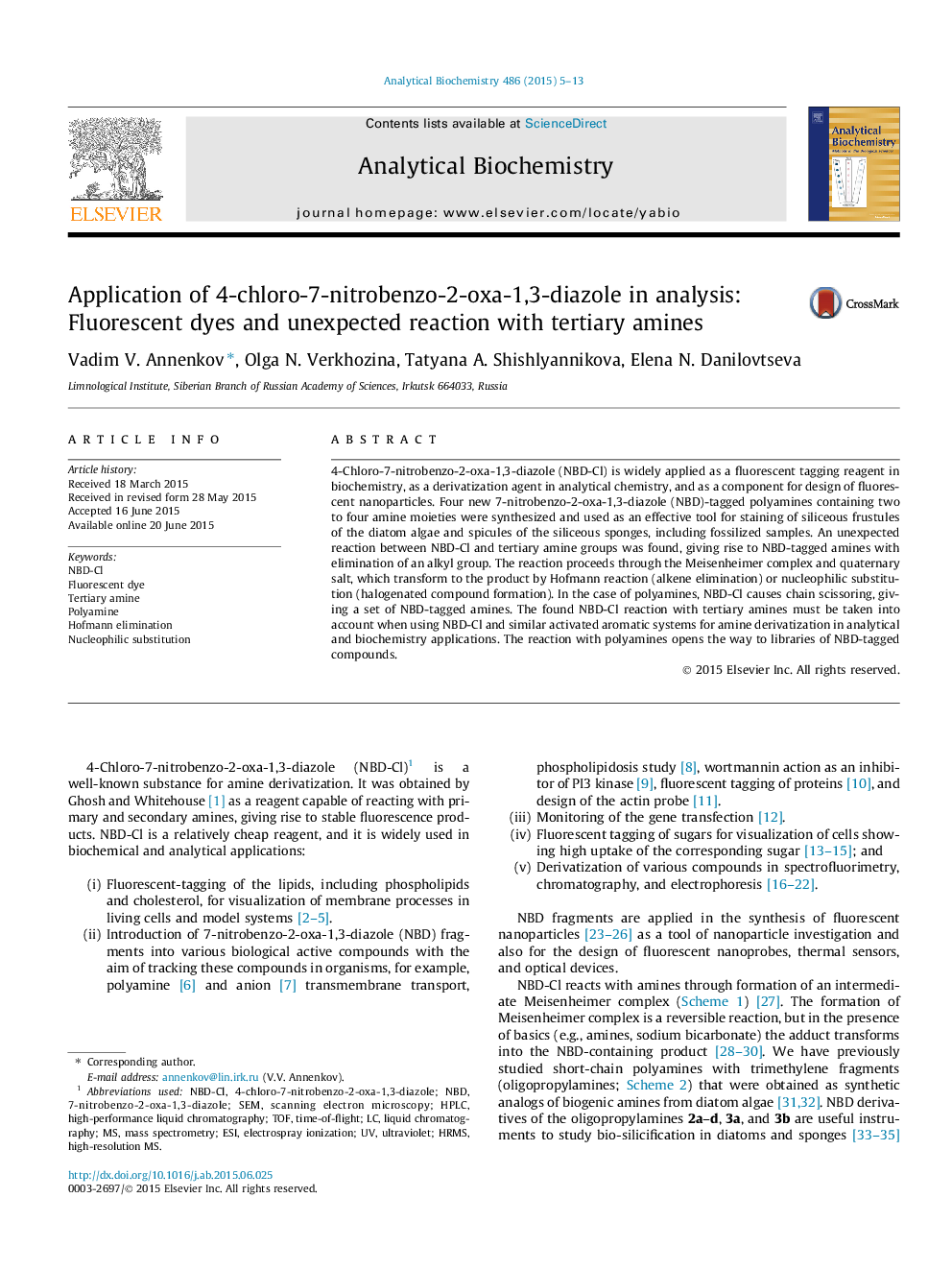| Article ID | Journal | Published Year | Pages | File Type |
|---|---|---|---|---|
| 1173171 | Analytical Biochemistry | 2015 | 9 Pages |
Abstract
4-Chloro-7-nitrobenzo-2-oxa-1,3-diazole (NBD-Cl) is widely applied as a fluorescent tagging reagent in biochemistry, as a derivatization agent in analytical chemistry, and as a component for design of fluorescent nanoparticles. Four new 7-nitrobenzo-2-oxa-1,3-diazole (NBD)-tagged polyamines containing two to four amine moieties were synthesized and used as an effective tool for staining of siliceous frustules of the diatom algae and spicules of the siliceous sponges, including fossilized samples. An unexpected reaction between NBD-Cl and tertiary amine groups was found, giving rise to NBD-tagged amines with elimination of an alkyl group. The reaction proceeds through the Meisenheimer complex and quaternary salt, which transform to the product by Hofmann reaction (alkene elimination) or nucleophilic substitution (halogenated compound formation). In the case of polyamines, NBD-Cl causes chain scissoring, giving a set of NBD-tagged amines. The found NBD-Cl reaction with tertiary amines must be taken into account when using NBD-Cl and similar activated aromatic systems for amine derivatization in analytical and biochemistry applications. The reaction with polyamines opens the way to libraries of NBD-tagged compounds.
Related Topics
Physical Sciences and Engineering
Chemistry
Analytical Chemistry
Authors
Vadim V. Annenkov, Olga N. Verkhozina, Tatyana A. Shishlyannikova, Elena N. Danilovtseva,
